If you enjoyed this book, discover your next great read with the following excerpt.
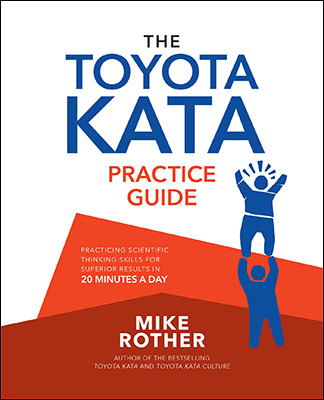
INTRODUCTION
A WAY TO LEARN AND TEACH SCIENTIFIC THINKING
K ata are simple, structured routines that you practice deliberately, especially at the beginning, so their pattern becomes a habit and leaves you with new abilities. The word comes from the martial arts, where Kata are used to train combatants in basic building-block moves. But the idea of practicing Kata can be applied in a much broader sense. This practice guide is about practicing a scientific way of working, and, ultimately, thinking, in order to achieve superior results.
No one knows what the world will look like in the future, so one of the most valuable skills you can have is the ability to adapt. Scientific thinking is exactly that. It involves a running comparison between what you predict will happen next, seeing what actually happens, and adjusting based on what you learn from the difference. Scientific thinking may be the best way we have of navigating through unpredictable territory to achieve challenging goals. Practiced deliberately for even just 20 minutes a day, scientific thinking can make anyone more adaptive, creative, and successful in the face of uncertainty.
Perhaps the greatest thing about scientific thinking is that it is a life skill thats useful for developing solutions in any situation. We tend to equate creativity with the arts, but scientific thinking is creative thinking, and practicing it is at the root of creative capability and mindset. The purpose of this book is to share what weve learned about using the practice routines of the Improvement Kata and Coaching Kata to teach and learn scientific thinking.
Youll find that scientific thinking is not difficult, its just not our default mode. Practicing the Improvement Kata and Coaching Kata forms habits that help you solve problems, achieve goals, and reframe how you look at and deal with the world. But it is not about learning problem solving. Its about learning a mindset that makes you better at problem solving.
How do we modify our way of thinking, and how do you do that across a team or an entire organization?
Many of our thinking patterns live in a self-perpetuating loop. Simply put, every time we think or do something, we are more likely to do it again (). Every time we think or do something, were adding more pavement to the roadways in our brain, turning them into highways and increasing the likelihood that well use those same roads again. Theyre our habits.
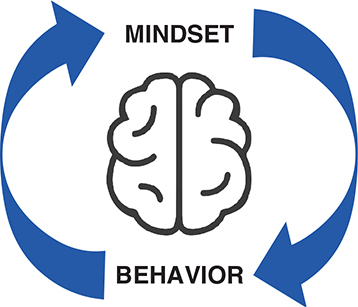
Figure I.1. Every time you think or do something, you are more likely to do it again.
The good news is that habits are essential to our survival. The even better news is that many of our thinking patterns can be modified, through a process that resembles skill development in sports and music. You deliberately practice a new behavior pattern, every day, and over time, and with the right set of emotions, that creates new neural pathways and reshapes your thinking.
However, shifting to a new, life-changing habit all at once is probably impossible, since the strength of our existing neural pathways, our existing habits, tends to pull us back. Its usually more effective to start small, by introducing a few new routines into your daily activity and building on them as your abilities and confidence start to grow.
Thats where Kata come in. Or, as I like to call them, Starter Kata. These are structured practice routines that put you on the road to successfully developing new patterns of thinking (). Practicing Starter Kata modifies the mindsets that drive our behavior, increases the velocity of learning, and is particularly helpful when you want to create a shared way of thinking and acting in a group of people, because everyone starts with the same basics.

Figure I.2. Practicing Starter Kata helps you develop new thinking by introducing new behaviors.
The Toyota Kata Practice Guide is an instruction manual and reference book for a set of Starter Kata that are utilized to develop scientific thinking. Its designed for two users who work together as a pair:
 The Learner: Anyone who wants to become proficient, through practice, in the practical scientific working and thinking pattern described by the Improvement Kata.
The Learner: Anyone who wants to become proficient, through practice, in the practical scientific working and thinking pattern described by the Improvement Kata.
 The Coach: Anyone who wants to become proficient at providing coaching support to the Improvement Kata learners by practicing the Coaching Kata.
The Coach: Anyone who wants to become proficient at providing coaching support to the Improvement Kata learners by practicing the Coaching Kata.
The Toyota Kata Practice Guide gives you an approach for mobilizing the creative capacity of anyone and any team in any organization. Begin by practicing the Starter Kata presented in this book, and then, as you gain greater scientific thinking skill and understanding, build upon them to fit your situation and develop your own way. The Starter Kata are not the end gamethey put you on the road to new skills.
A Way of Managing Suitable for Our Time
We may be exiting a business period when the main challenges revolved around maximizing efficiency and reducing cost, and entering a time when challenges are more diverse and paths more unpredictable. Yesterdays solutions may not fit tomorrows problems. But there is no cause for concernwere well equipped to meet challenges of all sorts, as long as we practice an effective way of doing that. The most important thing for managers to focus on may not be the content of what their people are working on, but the patterns of thinking and acting we utilize as we strive for goals. What we are talking about here is developing the capability and confidence of people in the organization as a main aspect (and possibly the main aspect) of a managers job.
The management methods weve been practicing over the last few decades were arguably intended to reduce uncertainty, but the management methods of the future may be as much about being effective and comfortable working within unavoidable uncertainty. Practicing the Improvement Kata and Coaching Kata is not going to make you and your team more certain about how to reach a particular goal. It makes you more certain about how to go about reaching any goal.
Although learning new skills involves a certain amount of discomfort, its quite amazing what you can achieve through practicing a practical form of scientific thinking. The more scientific thinking capability you develop in your teams, the more you can empower them to meet challenges that you may have once considered impossible. Managers play a key role in this, because it is their job to create the creators. The Toyota Kata Practice Guide is a handbook for how to do that. Look around you. The workplace may be the largest classroom of all, and its managers are the teachers.
Mike Rother
March 2017
Ann Arbor, USA
The Toyota Kata Backstory
The original Toyota Kata research my colleagues and I did ran from 2004 to 2009 and is summarized in the book Toyota Kata. It was driven by these two questions:
What are the unseen managerial routines and thinking that lie behind Toyotas success with continuous improvement and adaption?
Next page


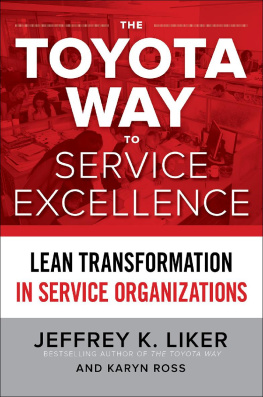
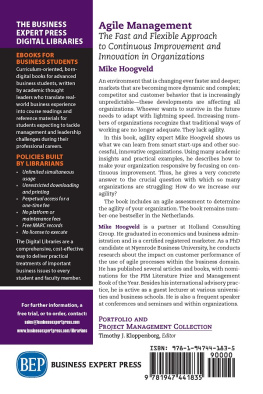

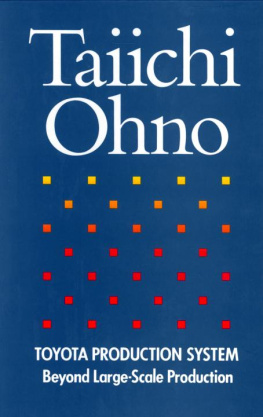




 The Learner: Anyone who wants to become proficient, through practice, in the practical scientific working and thinking pattern described by the Improvement Kata.
The Learner: Anyone who wants to become proficient, through practice, in the practical scientific working and thinking pattern described by the Improvement Kata.